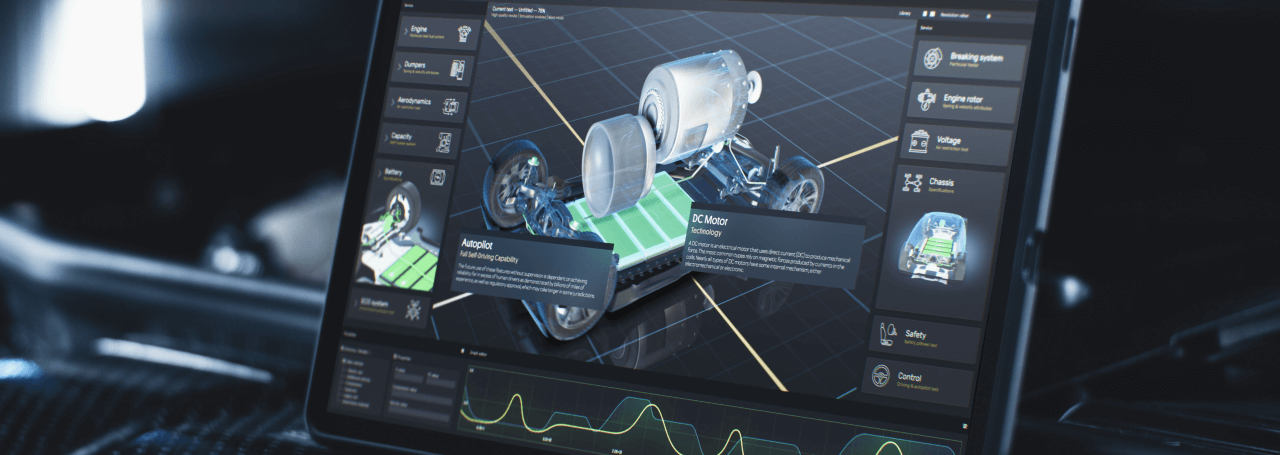- 1. Understanding the Basics of TN Panel and IPS Display Technology
- Key Differences Between TN Panel and IPS Displays
- 3. Analyzing the Color Accuracy and Viewing Angles of TN Panel Vs IPS
- 4. Evaluating the Response Time and Refresh Rates: TN Panel Vs IPS
- 5. Comparing the Power Consumption: TN Panel Vs IPS
- 6. Cost Analysis: Is TN Panel or IPS More Affordable?
- 7. Ideal Use Cases: When to Choose TN Panel and When to Opt for IPS?
- 8. Making the Final Decision: TN Panel or IPS, Which One is Right for You?
- Frequently Asked Questions
In the rapidly evolving world of display technology, two types of panels have emerged as the most popular choices for users worldwide: Twisted Nematic (TN) panels and In-Plane Switching (IPS) panels. With over 60% of the global market share, these two technologies dominate the display industry, each offering unique advantages and disadvantages. This comprehensive guide aims to delve deep into the world of TN and IPS displays, providing you with expert advice on their fundamental principles, key differences, and performance metrics such as color accuracy, viewing angles, response time, and refresh rates.
We will also examine the power consumption of both types of panels, a crucial factor in today’s energy-conscious world. Cost is another significant aspect that can influence your decision, and we will provide a detailed cost analysis to help you understand which option is more affordable. Furthermore, we will explore the ideal use cases for each type of panel, assisting you in determining when to choose a TN panel and when an IPS might be a better fit.
Finally, we will guide you in making the ultimate decision: TN Panel or IPS, which one is right for you? Whether you’re a gamer seeking the fastest response times, a graphic designer needing the most accurate colors, or a casual user looking for the best value for money, this guide will equip you with the knowledge to make an informed choice. So, let’s embark on this journey to understand which display technology suits you best.
1. Understanding the Basics of TN Panel and IPS Display Technology
The world of display technology is filled with acronyms and terms, two of which are TN (Twisted Nematic) and IPS (In-Plane Switching). These terms refer to the types of LCD (Liquid Crystal Display) panels used in modern screens, each with their own set of advantages and disadvantages. Choosing between a TN panel and an IPS panel largely depends on what you plan to use your display for, as each technology offers different performance characteristics.
Let’s delve into the specifics. TN panels are known for their fast response times and high refresh rates, making them a popular choice among gamers. However, they fall short when it comes to color accuracy and viewing angles. On the other hand, IPS panels offer superior color accuracy and wider viewing angles, but typically have slower response times and lower refresh rates. This makes them more suitable for tasks that require accurate color representation, such as graphic design and photo editing.
To illustrate these differences, let’s consider the following comparison table:
| TN Panel | IPS Panel | |
|---|---|---|
| Response Time | 1ms | 4ms |
| Refresh Rate | 144Hz | 60Hz |
| Color Accuracy | Less accurate | Highly accurate |
| Viewing Angles | Narrow | Wide |
As you can see, the choice between a TN panel and an IPS panel depends on your specific needs. If you’re a gamer seeking fast response times and high refresh rates, a TN panel might be the best choice. However, if you’re a designer or photographer who values color accuracy and wide viewing angles, an IPS panel would be more suitable.
Key Differences Between TN Panel and IPS Displays
When it comes to the key differences between TN (Twisted Nematic) panels and IPS (In-Plane Switching) displays, the primary factors to consider are color accuracy, viewing angles, and response time. TN panels are known for their fast response times and high refresh rates, making them a popular choice for gamers. However, they often fall short when it comes to color accuracy and viewing angles, which can be a significant drawback for graphic designers or anyone who values a high-quality visual experience.
On the other hand, IPS displays excel in providing vibrant, accurate colors and wide viewing angles, making them ideal for professional photo and video editing. However, they typically have slower response times than TN panels, which can result in motion blur during fast-paced gaming. It’s also worth noting that IPS displays are generally more expensive than TN panels due to their superior image quality. Ultimately, the choice between a TN panel and an IPS display will depend on your specific needs and budget.
3. Analyzing the Color Accuracy and Viewing Angles of TN Panel Vs IPS
When it comes to color accuracy, IPS panels are generally superior. They are designed to offer a wider color gamut, which means they can display a broader range of colors. This is particularly important for professionals who work with graphics, such as photographers and designers, as it ensures that the colors they see on the screen are as close as possible to the colors of the original image. On the other hand, TN panels have a narrower color gamut, which can result in less accurate color reproduction.
Viewing angles are another crucial factor to consider. IPS panels have wider viewing angles, which means the image quality remains consistent even when you view the screen from a side angle. This is beneficial for those who often share their screen with others or use their device in various positions. Conversely, TN panels have narrower viewing angles, which can lead to color shifting and distortion when viewed from the side. In conclusion, while TN panels may be more affordable and offer faster response times, IPS panels provide superior color accuracy and wider viewing angles, making them the better choice for professionals and those who prioritize image quality.
4. Evaluating the Response Time and Refresh Rates: TN Panel Vs IPS
When it comes to gaming and high-speed video playback, the response time and refresh rates of a monitor can significantly impact the overall experience. TN panels are known for their superior response times and refresh rates. This makes them an excellent choice for competitive gaming where every millisecond counts. However, it’s worth noting that the superior speed of TN panels often comes at the cost of color accuracy and viewing angles.
- TN Panels: Typically have faster response times (1ms) and higher refresh rates (144Hz).
- IPS Panels: Generally have slower response times (4ms) and lower refresh rates (60Hz).
On the other hand, IPS panels may not match the speed of TN panels, but they offer superior color reproduction and wider viewing angles. This makes them a preferred choice for graphic designers, photographers, and anyone else who values color accuracy over speed. However, recent advancements in IPS technology have led to the development of IPS panels with response times and refresh rates that can compete with TN panels.
- IPS Panels: Offer superior color accuracy and wider viewing angles.
- TN Panels: Provide faster response times and higher refresh rates.
5. Comparing the Power Consumption: TN Panel Vs IPS
Power consumption is a critical factor to consider when choosing between a TN panel and an IPS. Generally, IPS panels consume more power than TN panels due to their complex pixel structure and backlighting technology. This higher power consumption can impact the device’s battery life, especially in portable devices like laptops and tablets. On the other hand, TN panels are more energy-efficient, making them a better choice for users who prioritize power saving. However, it’s important to note that the power consumption can also vary based on the screen size, resolution, and brightness settings. Here’s a quick checklist to guide you:
- IPS panels: Higher power consumption, could impact battery life, better for stationary devices.
- TN panels: Lower power consumption, better for portable devices and power saving.
- Consider screen size, resolution, and brightness settings as they also affect power consumption.
6. Cost Analysis: Is TN Panel or IPS More Affordable?
When it comes to the financial aspect of the TN Panel vs IPS debate, TN Panels generally come out on top. They are typically less expensive to produce, which translates to lower retail prices for consumers. This makes them a popular choice for budget-conscious buyers or those who require multiple monitors. However, it’s essential to note that while TN Panels may be more affordable, they may not offer the same level of performance or visual quality as their IPS counterparts.
On the other hand, IPS panels are often priced higher due to their superior color accuracy, wider viewing angles, and better overall display quality. They are a preferred choice for professionals in graphic design, photography, and other fields where color precision is crucial. So, if your work or hobbies require a high-quality display, investing in an IPS monitor could be worth the extra cost. Here’s a quick checklist to help you decide:
- Are you on a tight budget? Consider a TN Panel.
- Do you need multiple monitors? TN Panels could be more cost-effective.
- Is color accuracy and display quality a priority? An IPS panel might be worth the investment.
7. Ideal Use Cases: When to Choose TN Panel and When to Opt for IPS?
Deciding between a TN panel and an IPS panel largely depends on your specific needs and use cases. For high-speed gaming, a TN panel is often the preferred choice. This is due to their fast response times and high refresh rates, which can significantly enhance the gaming experience. However, it’s important to note that while TN panels excel in speed, they tend to fall short in terms of color accuracy and viewing angles. So, if you’re a professional gamer where speed is paramount, a TN panel might be the best fit for you.
On the other hand, if you’re a graphic designer, photographer, or any professional who relies heavily on color accuracy and consistency, an IPS panel is the way to go. IPS panels offer superior color reproduction and wider viewing angles compared to TN panels. This makes them ideal for tasks that require precise color management. Additionally, IPS panels also offer better overall visual quality, making them a great choice for general use and multimedia consumption. So, when it comes to professional work and high-quality visuals, IPS panels are the clear winner.
8. Making the Final Decision: TN Panel or IPS, Which One is Right for You?
Choosing between a TN panel and an IPS largely depends on your specific needs and preferences. If you are a gamer who values fast response times and high refresh rates, a TN panel might be the best choice for you. These panels are known for their speed, making them ideal for fast-paced games where every millisecond counts. However, they do have their drawbacks. The color accuracy and viewing angles of TN panels are not as good as those of IPS panels, which can be a deal-breaker for some users.
On the other hand, if you are a graphic designer, photographer, or anyone who values color accuracy and wide viewing angles, an IPS panel is likely the better choice. These panels deliver superior color reproduction and wider viewing angles, making them perfect for tasks that require precise color management. However, they do tend to have slower response times than TN panels, which might not be ideal for gamers. In the end, the decision comes down to what you value most in a display. Consider these factors carefully and choose the panel that best suits your needs.
Frequently Asked Questions
What is the lifespan of TN Panel and IPS displays?
Both TN Panel and IPS displays have a long lifespan. However, the lifespan can vary depending on the usage and maintenance. On average, both displays can last for about 30,000 to 60,000 hours of use. It’s important to note that the quality of the display may degrade over time, especially if it’s frequently used for high-intensity tasks.
Can I use either TN Panel or IPS for graphic design?
Yes, you can use either TN Panel or IPS for graphic design. However, IPS displays are generally preferred for this purpose because they offer better color accuracy and wider viewing angles. This makes them ideal for tasks that require precise color reproduction, such as graphic design and photo editing.
How does the performance of TN Panel and IPS displays compare in bright light?
Both TN Panel and IPS displays perform well in bright light. However, IPS displays have a slight edge because they offer better color reproduction and contrast ratios. This means that the colors on an IPS display will remain more accurate and vibrant even in bright light conditions.
Are TN Panel and IPS displays suitable for gaming?
Yes, both TN Panel and IPS displays are suitable for gaming. TN Panel displays have faster response times and higher refresh rates, which make them ideal for fast-paced games. On the other hand, IPS displays offer better color accuracy and wider viewing angles, which can enhance the gaming experience for slower-paced, visually-rich games.
What are the environmental impacts of TN Panel and IPS displays?
Both TN Panel and IPS displays have environmental impacts, mainly due to their energy consumption. TN Panel displays generally consume less power than IPS displays, which can make them a more environmentally-friendly choice. However, the difference in power consumption is not significant and should not be the sole factor in your decision.
DISCOVER OUR
Whitepaper
Achieve the perfect user-display interaction with the right Touch Sensor IC. Ever faced issues with phantom touch events or certification? Boost your R&D like a pro with our Whitepaper!



